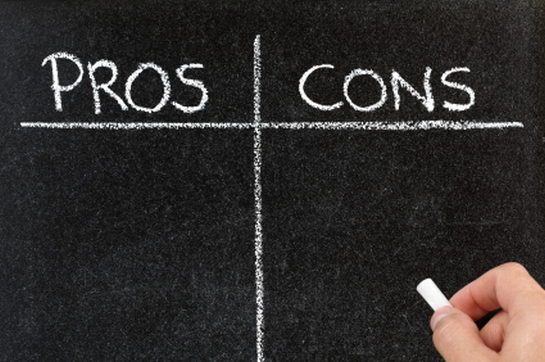
Last week we talked about opportunity cost, or the cost of choosing to do or buy one thing rather than another. Think back on some of the big decisions you’ve made, such as choosing a college. When you made that decision, whether you were aware of it or not, you probably conducted a cost-benefit analysis. While that may sound incredibly formal, you’re basically just comparing the positives and the negatives of each option. For example, one of the schools you were considering may have had a 90% job placement rate. However, the cost of tuition was $40,000. For some, that cost may outweigh the benefit of a high job placement rate. Comparing benefits and costs helps you make well-informed decisions.
One of the costs you should consider is the opportunity cost of not choosing an alternative. For example, in addition to the cost of tuition, consider the opportunity cost incurred by choosing not to go directly to work after high school. Perhaps you could be making $20,000 right now rather than the small amount you might make as a student worker. That’s a big lost cost and should be factored into your cost-benefit analysis.
The government uses cost-benefit analyses to assist in making decisions regarding policies. At this level, a cost-benefit analysis is not as simple as it is when utilized by you or I. The decision-makers have to consider things such as consumer surplus (the difference between what a consumer would be willing to pay and what they actually pay) and inflation.
For examples of how cost-benefit analysis is used in politics, check out some of these books available at Andersen Library:
- The Globalization of Cost-Benefit Analysis in Environmental Policy, edited by Michael A. Livermore and Richard L. Revesz. Call number: HD47.4 .C678 2013, Main Collection (3rd floor)
- Public Goods, Public Gains: Calculating the Social Benefits of Public R&D, by Albert N. Link and John T. Scott. Call number: HD47.4 .C678 2013, Main Collection (3rd floor)
